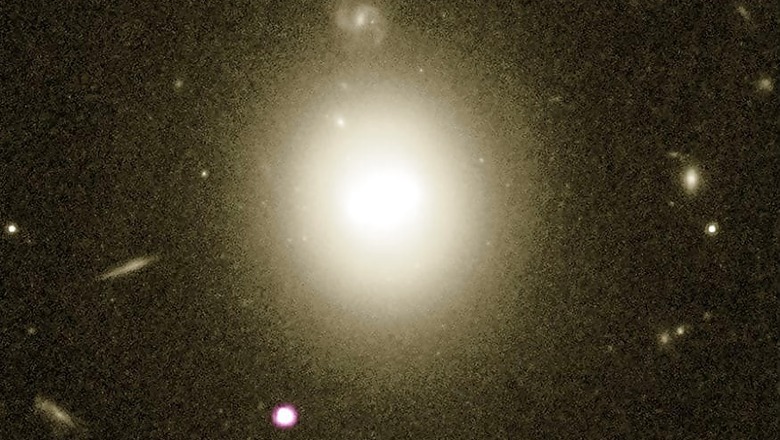
views
A team of researchers at the National Astronomical Observatory of Japan (NAOJ) have disclosed the discovery of a strange swirl of gas clouds at the centre of our galaxy. While the findings have not ascertained for sure, the researchers state that this discovery may be mankind's very first proof of an elusive species of black holes that have not been observed in close scrutiny. The observations have noted a massive cloud of gas at high velocity, referred to in official nomenclature as HCN-0.085-0.094, at the centre of our galaxy. Within this cloud, which comprises three smaller clumps of gas, the researchers note that one of the clumps appear to be in a high velocity swirling motion, but is neither accumulating from neighbouring clumps and nor disappearing. This has led to suggestions that the observation may be related to an intermediate, dormant black hole.
The key to observing black holes lie in observing their event horizons, or the spherical space periphery around the dying star, that bend gravitational waves and do not allow light to escape. In such an event horizon, the observed gas cloud would show properties of accretion or dispersion. That, coupled with the rough size of the point around the swirling gas cloud, as well as the absence of stellar counterparts (i.e. the remnants of a dying star) suggest that this black hole in question is quiescent or dormant. Additionally, astrophysicist Shunya Takekawa of the NAOJ's research team that made the discovery stated in his paper that the mass of the central body is to the tune of 10,000 solar masses, or 10,000 times the mass of our Sun.
In black hole parlance, the mysterious bodies, which we are yet to fully understand, are classified into two types — stellar mass ones, and supermassive ones. The first refers to smaller black holes that roughly exhibit 100 times the mass of our Sun. The latter, on the other hand, begin at 100,000x the mass of our Sun, and can get much, much bigger than what we can comprehend. So far, there has been considerable mystery around the gap between the two, which is where the recent discovery fits in. These are called intermediate black holes, and have largely remained elusive to our telescopes. The latest observation, once confirmed, would be the fifth of its kind, all observed at the centre of our galaxy. This would tend to suggest that such intermediate black holes appear in abundance at the heart of our galaxy.
This would be a pivotal discovery for space research, and lead further studies into better understanding the properties of stars and our universe, and why such black holes are seemingly more difficult to find. It may also lead research on to why they might occur in one particular region of a galaxy, which is what seems to be the case at the moment. It would also help us understand how different masses of black holes interact with gravitational waves, and even with each other. Takekawa and his team's paper is yet to be peer-reviewed, and is presently available on Arxiv for everyone to access.



















Comments
0 comment